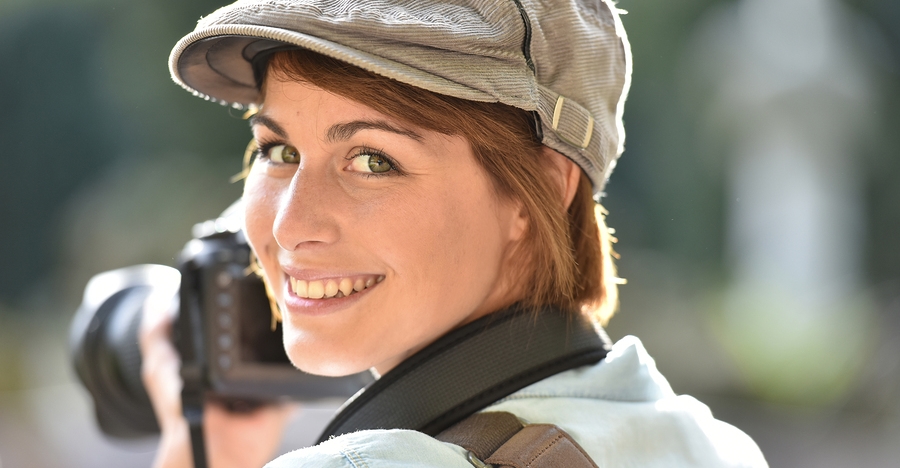I used to own a nice macro lens that I got as a gift but I just didn’t seem to have enough use for it to keep it.
So it wasn’t until recently that I happened to get my hands on another macro lens and I, sort of accidentally, tried it for portraits. I was quite surprised by the results! Like any lens, macro has advantages as well as disadvantages. This article over at Fstoppers will explain more.
PRO’s
Macro Lenses Have Outstanding Detail
As a lens that is designed to capture the tiniest of details, macro lenses are notorious for rendering some of the sharpest detail. When focus is on point, a good macro lens will resolve a crispness that few lenses can match. This helps create extremely clean, razor sharp images, that make for wonderful prints.
Macro Lenses Often are Available in Wonderful Portrait Focal Lengths
While there are some macro lenses which break this mold, the majority of macro lenses on the market represent focal lengths that are characterized as having a perfect balance of telephoto properties to create flattering portraits. The most common macro focal length is in the 100mm neighborhood which many headshot photographers characterize as being the perfect headshot focal length.
CON’s
Macro Lenses Can be “Too” Sharp
Remember that amazing sharpness I mentioned as a benefit? To some it can also be a detriment as that extreme sharpness resolves blemishes and flaws with amazing clarity thus increasing the post production workload. To some photographers that perfect sharpness is critical, to others it is a flaw. If you are in the latter camp, a macro lens is not going to be the lens for you.
Macro Lenses Tend to Suffer from Focus Breathing
Focus breathing is when a lens’s focal length seems to slightly change between max focus and minimum focus which effectively changes your frame without moving the camera. Almost all lenses suffer from this to a degree. Of all my lenses, my macro lenses suffer from this the most, presumably because of the extremely long focus distance. For example, my 150mm macro has a frame that is closer to a 135mm lens when focused at headshot range. Which I don’t mind at all, personally, as I feel 135mm is the perfect portrait focal length for headshots but it is certainly a flaw worth noting.
Conclusion
Macro lenses can make for fantastic portrait lenses, they can also make for poor portrait lenses depending on your needs or priorities for a given shoot. When deciding which portrait lens to buy keep in mind which factors above matter most to you and you will be able to easily determine if a macro lens is right for you.
Personally, even though I own multiple macro lenses, I’m still on the fence about them. In some situations I adore their results, in other situations I find myself frustrated with them. More than anything, however, I think it is about finding out if a macro lens fits nicely into your workflow or not.
If you’d like to see how a professional photographer uses a macro lens for different kinds of portraits, check out this great video we found.
GO TO THE NEXT PAGE FOR THE VIDEO
Read the full article about macro lens portraiture over at Fstoppers.
Source: Fstoppers


Most people don’t want razor sharp portraits.
Waste of time “bull crappy” article, photography is an art form so why do we try to “standardize” every thing? Depending on what your definition of a portrait is (it comes from the word: :Portray) and how you want to portray, it different lenses will give different results. I can remember when photographers smeared petroleum jelly on a ND filter to get a “soft focus” look. Actually there is no such thing as a “portrait lens, since all lenses “portray” a subject.
While the video at the end has to do with using a 105mm Micro Nikon lens as a portrait lens and is only minorly annoying.
This article is Silly and written and edited by people who know nothing about photography! Macro Lenses are lenses designed to shoot at a close ration, down to 1:1 (some even closer) They have nothing to do with portraiture. Macro lenses can be found in the ‘sweet spot’ for portraiture 70-135mm roughly a focal length that provides for minimal distortion and slight compression of textures. Macro lenses are also found in wide angle/perspective lenses! Olympus use to make a few, as well as other companies.
Focus breathing is an idiotic term used by uneducated. Other than internal focus lenses, lenses are rated by their focal length base on focus at infinity. At infinity their focal point is the rate mm distance from the focal plane. a 105mm lenses focal length will be 105mm from the focal plane, when focused closer, there are in effect a longer focal length lens and give the perspective of a longer focal length lens. For the record the perspective of a Nikon 105mm micro at 1:1 is narrower than the internal focus 200mm micro at 1:1!
Macro lenses, in general, are designed to render more detail than other lenses. This is not necessarily desirable in a portrait lens. Some of the fancy portrait lenses, such as the Rodenstock Imagon and Fujinon SFS, allow adjusting spherical aberration to soften the focus, while allowing rendering a sharp core image. This has been refined in the Nikon DC lenses to give wonderful “boken” by retaining the focus areas with out the added delineation. A more modern feel to this idea.
pics takeimg is to injoy what u doing .yes more lens u have u injoy more but you need to injoy it all I say